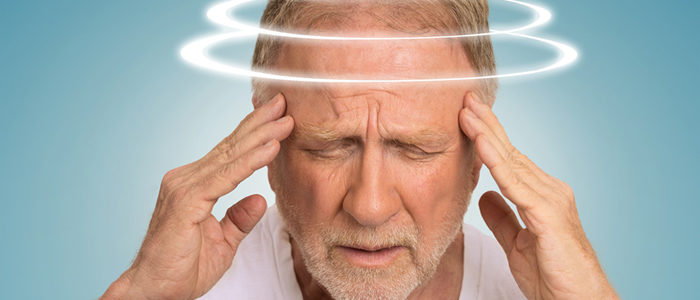
Vertigo
It can be a common occurrence for some individuals to become dizzy or lightheaded when standing or getting up too quickly from a lying down position. However, vertigo is typically worse. Symptoms can occur spontaneously and in some cases may last for anywhere from a few minutes to hours or even days.
Symptoms of Vertigo
Dizziness is the most notable symptom of vertigo, though it goes beyond feelings of general imbalance. Individuals may experience feelings of spinning, swaying, or tilting, even to the point of feeling pulled toward one direction. Other symptoms may include nausea and vomiting, ringing in the ears or loss of hearing, abnormal movements of the eyes, headache, or sweating.
Causes of Vertigo
Vertigo is considered to be a vestibular disorder. This is most likely caused by problems that occur in the inner ear, though less frequently may be a result of trouble in the brain. A few of the most common cases of vertigo are as follows:
- Benign paroxysmal positional vertigo. Often referred to as BPPV, this is the most common type of this balance problem and is caused when small particles of calcium collect in the inner ear.
- Vestibular Migraine. This condition occurs when a migraine involves the inner ear and can lead to attacks of vertigo, a sensation of imbalance, or blurriness to the vision.
- Ménière’s disease. This disorder is characterized by recurrent episodes of vertigo and hearing loss.
- Cholesteatoma. This is a skin growth that may occur behind the middle ear, which could also affect balance.
- Structural defects or damage. Whether from a birth defect, injury, or infection, damaged inner ear structures that do not function properly may lead to sensations of imbalance.
Diagnosing Vertigo
If an individual experiences symptoms of vertigo on a regular basis, it is important to seek medical attention from an otolaryngologist in order to determine the source of the problem. The physician may complete a physical examination and order scans or other tests.
Vertigo Treatments
Treatments for this disorder will be based on the direct cause of the problem. Canalith repositioning uses a series of head and body movements to allow calcium particles to move to areas where they may be reabsorbed by the body. Home exercises may also be helpful and are often prescribed. Dietary changes may include limiting items that cause migraine such as aged foods or processed/preserved foods, caffeine, and alcohol.
Sometimes medications may be prescribed to help the patient, and may be used to treat symptoms such as motion sickness or nausea. Surgery is a final solution when no other treatments are effective and may be used to correct a structural dysfunction.
Living with Vertigo
It is important for those who suffer from this disorder to follow any instructions provided by a physician to manage symptoms as directed. Nearly all patients with vertigo can be treated and improved. The use of herbs, essential oils, and other home remedies should be cleared with the physician.

